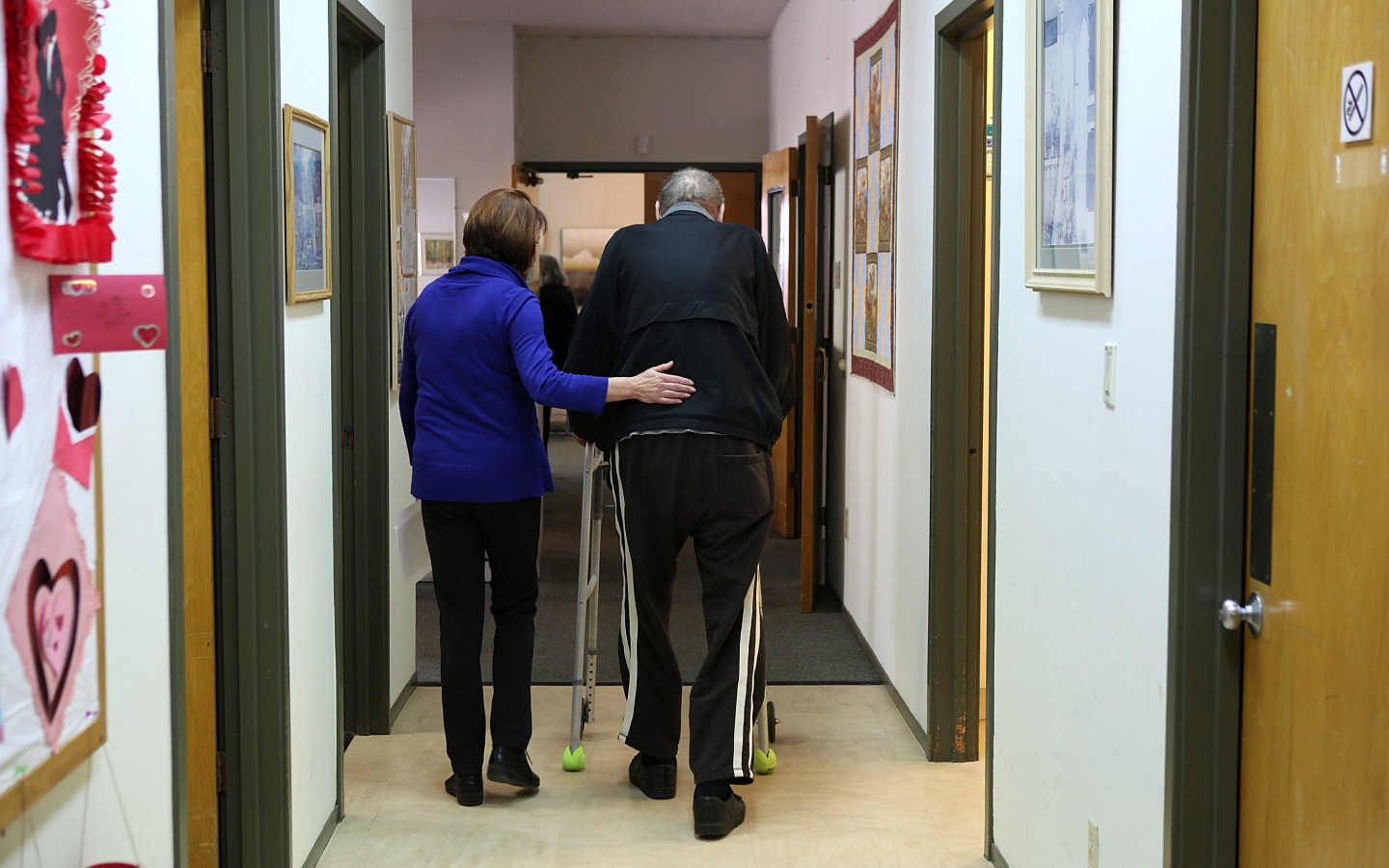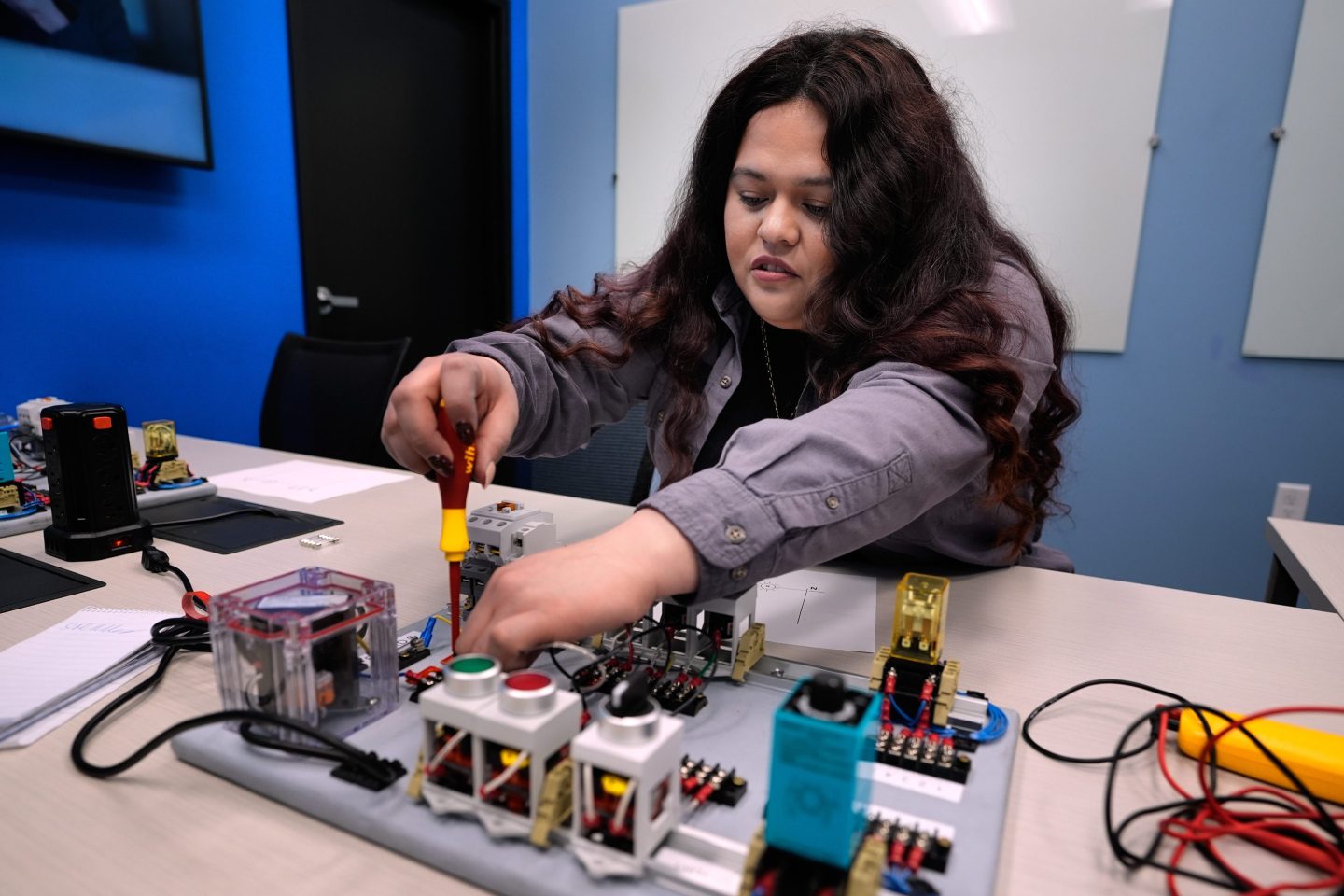- America’s health care system is straining under the twin pressures of an aging population and a stretched pool of health care providers. Doctors told Fortune that policies limiting skilled visas and student entries could deepen labor shortages in areas such as geriatrics and rural medicine, where immigrant staff have long filled gaps. Physicians urge clearer pathways for skilled workers to stay, warning that without them, the system’s capacity to care for older Americans may falter. On the other hand, changing priorities for the American populace may prompt policy changes to address rising demand for certain medical specialties.
When Dr. Brian Moraes opened his practice in Boca Raton, Fla., he was following in the footsteps of his physician parents and grandfather, a Bombay-based general practitioner. Moraes hoped to do what the vast majority of those in health care set out to: help patients.
But in 2025 he spends his days “putting out fires.”
Instead of meeting and treating as many patients as he can, his hours are often clogged with referrals to geriatric specialists, who are increasingly hard to find. So, too, are psychiatrists, with Moraes often providing the support himself, as well as endocrinologists who have expertise in hormonal imbalances associated with diabetes and osteoporosis, and rheumatologists who specialize in autoimmune conditions like arthritis.
Then, two or three times a week, he will have appointments with recurring patients: those he discharged on the basis of ongoing care at home, who then have no choice but to return to the outpatient center when care workers prove too hard to find, adding hours onto his already packed schedule.
With the workload and friction increasing, it’s perhaps no surprise to the nephrologist—whose focus is the study of kidneys and diseases related to blood pressure—that his peers are retiring earlier, inadvertently increasing the burden on those still in the field.
Much of Moraes’s difficulty stems from a shrinking pool of skilled labor in the health care workforce. While his practice hasn’t struggled to recruit talent, referrals for specialist care that he cannot provide are getting tougher. And the problem is likely to get worse: Much of the expertise he and his patients need is in geriatric care, a sector which few medical students want to pursue.
And the problem is potentially exacerbated by government policy which may deter the imported talent needed to keep the health care industry afloat. In the 2024 election, American voters made it clear that immigration was one of the major issues they wanted their future president to address. President Trump has delivered a raft of actions since: Adding a $100,000 price tag to H-1B visas, for the highly skilled, proposing a 15% cap on international students at American universities, and enhancing vetting and screening of green card applicants “to the maximum degree possible.”
The policies are having their desired effects: Pew Research found in August that at the beginning of 2025, 53.3 million immigrants lived in the United States, the largest number ever recorded. By June, America’s foreign-born population had declined by more than a million people—a fall the likes of which hasn’t been seen since the 1960s. Likewise, according to preliminary data released by the National Travel and Tourism Office, the number of student visas declined in August by 19% compared with a year prior. June and July also fell—but August is of particular note because it is usually the month that sees a peak.
Trump’s immigration plans have already presented some unforeseen economic outcomes: Experts believe America’s unemployment rate has remained relatively stable because job losses are being offset by a shrinking labor force as individuals leave the U.S. The economy has withstood weak role creation precisely because the pool of applicants is shrinking.
On the other hand, a working paper from the American Enterprise Institute (AEI), a conservative economic policy center, found the Trump administration’s immigration policy—even before the changes to the H-1B visa were announced—will likely result in negative net migration in 2025, shrinking U.S. GDP by between 0.3% and 0.4% as a result.
While the Oval Office has made clear its intention to grow the American economy in other ways, the issue remains that the risks of lower immigration aren’t just about what foreign-born individuals are contributing, but also how they’re doing it.
Alarms have already been raised on Wall Street and in Silicon Valley about the impact of skilled, motivated individuals being unable to come to the U.S. But the problem is also present in the health care workforce: Studies show immigrant staff have not only increased as a percentage of its shrinking skills supply, but are also more likely to work in the roles which are in higher demand, despite, on average, being lower-paid. Additionally, they’re more likely to work in regions that find it harder to attract talent.
The health care sector also has an additional pressure to wrangle: how to care for an aging population when the domestic workforce isn’t doing it themselves.
A gap in geriatric care
According to the Population Reference Bureau, the number of Americans age 65 and older is projected to increase from 58 million in 2022 to 82 million by 2050—up 42%. There is, however, a relatively small pool of people ready to care for them.
“There’s a huge gap in geriatric care,” Moraes tells Fortune. “I don’t talk to any medical students who say, ‘Oh, I want to go into geriatrics when I get out.’ Everybody says, ‘I want to go to dermatology or orthopedics.’
“Our aging population is definitely increasing at a faster rate than our ability to take care of them. I don’t see that changing anytime in the near future. That’s one of the things that a lot of the international health care workers were able to fill: If you go to a nursing home or you go to a hospital on the night shift, it’s almost all international aides and nurses.”
He added: “When you’re talking about some of the other areas of medicine that are maybe not so lucrative like home health aides and and nurses and nursing aides, I have noticed that there is definitely a need for international people to be able to fill those positions because Americans just aren’t doing it, they’re not going into that.”
A study from the Baker Institute found that between 2007 and 2021 the share of the population in the U.S. that is foreign-born grew one percentage point, from 12.62% to 13.65%, and the share of foreign-born health care workers increased from 14.22% to 16.52%. Likewise, while the number of total workers in U.S. nursing care facilities declined pre-pandemic to COVID (down 1.8 million to 1.5 million), the portion of foreign-born workers in the sector rose, up to 18.21% in 2021 compared with 16.43% a decade prior.
The White House countered young, domestic talent can be called upon to fill holes in America’s health care labor force. Spokeswoman Abigail Jackson told Fortune: “Over one in 10 young adults in America are neither employed, in higher education, nor pursuing some sort of vocational training. There is no shortage of American minds and hands to grow our labor force, and President Trump’s agenda to create jobs for American workers represents this administration’s commitment to capitalizing on that untapped potential while delivering on our mandate to enforce our immigration laws.
“President Trump will continue growing our economy, creating opportunity for American workers, and ensuring all sectors have the workforce they need to be successful.”
The cost of motivating talent into the medical workforce could pile further pressure on an already stretched sector, warned Moraes, adding that the U.S. may already be losing out on foreign-born talent because of changing goalposts on immigration policy. While he hasn’t encountered any individuals who have left the U.S. or are being blocked from coming as a result of changing policy, Moraes said he does see more “fear” and uncertainty.
“I think it’s going to be harder for people to trust the fact that they can come to this country and be able to stay and work here,” Moraes added. “Other countries are actually economically starting to do better, and it may be more lucrative. Once upon a time it was a very good lifestyle to come to the United States, but now there are so many other countries that people can choose from to go to, so I have a feeling that our workforce is going to start decreasing in the areas that Americans aren’t going to want to go into.”
Question of confidence
The story is similar for New York urologist David Shusterman, a refugee who left the Soviet Union for the U.S. in the 1980s.
Shusterman’s concern is one of basic math: how to marry that rising reliance on foreign-born skilled labor with policies which are reducing net immigration. “Our medical schools are filled with foreign-born people, that’s really one of the issues. There’s a lot of positions that need filling right now; it’s hard to find a urologist, hard to find other specialties … We’ve been resorting to physician extenders—I have a lot of physician extenders in the office, but they’re also in short supply,” he tells Fortune. “Physician extenders” is an umbrella term for health care professionals who assist doctors to provide patient care, for example, nurse practitioners or physician assistants.
Immigration policy at present means “a lot of good people, because [of] the uncertainty, choose not to stay, or are more worried about staying,” said Shusterman. What’s needed is clarity, he said: “I know that at least 5% to 10% of the population of the urology programs are on visas, and those are people that if they want to stay here, they should be highly motivated to stay and not given the runaround treatment, because these are people who are in super-high demand. They would love to stay, mainly because of the reimbursement—they make more here than other places—and the reason they make more is because they’re needed.”
The expert advocated for the government—be it Trump 2.0 or thereafter—to lay out some clearer benchmarks on the skilled labor the U.S. wants to attract. While he believes the Trump administration is expediting some visas for skilled talent, he added: “My suggestion to the immigration department is to be much clearer about [saying], ‘This is what we need; if you study in these fields you have a clearer pathway. It’s something that is needed and in demand right now. And I stress that, that this is a highly productive group of individuals that is obviously going to work and make the country better, because they have skills that are marketable.
“It would help if even employers were able to advertise, like: ‘We have these qualified positions that the government will approve for you if you apply for this position,’” he added.
Four-year timeline
Trump’s policy action with regard to illegal immigration is often the first thing that comes to mind when the subject is raised. According to U.S. Immigration and Customs Enforcement (ICE) some 67,000 individuals have been detained in the 2025 fiscal year at the time of writing, and more than 71,000 people have been removed. That said, the rate of detentions and removals for the first half of this fiscal year would still put the Trump 2.0 administration behind the rates ICE reported last year, before he was elected. So while the focus of the Trump administration on immigration and deportation may be sharper, the policy itself is nothing new. Indeed, this policy could change if voters’ views shift on the matter—and an aging population may prompt that change.
Based in Connecticut, reproductive endocrinologist Shaun Williams has yet to see his practice, Illume Fertility, impacted by shifting policy. While demand for his specialty is increasing as women are continuing to choose to have children later in life, Williams believes the industry is competitive enough to continue attracting and retaining talent.
Even looking at the health care industry more widely, he’s relatively unconcerned: “I don’t think there are any changes that happen over a four-year period that will cause any long-term effects to the health care industry here in the United States. It will work itself out. There will likely be exceptions for different things—if it’s difficult to get certain visas in certain areas—[but] none of these changes are permanent.”
That said, Williams is conscious that he is operating in one of the wealthier, better-connected parts of the country, and research shows that in less affluent, more rural parts of the country those four years may prove a long wait. According to national policy think tank, the Center for Healthcare Quality and Payment Reform, only 42% of rural hospitals in the U.S. offer labor delivery services, with more than 100 labor and delivery units closing in the past five years.
Staffing costs and availability are chief among the reasons, the organization adds, both because skilled individuals can’t be sourced in rural areas and because the traditional long hours and on-call schedules poses further hurdles for recruitment. “Rural maternity care is in a state of crisis, and more women and babies in rural communities will die unnecessarily until the crisis is resolved,” the center adds.













